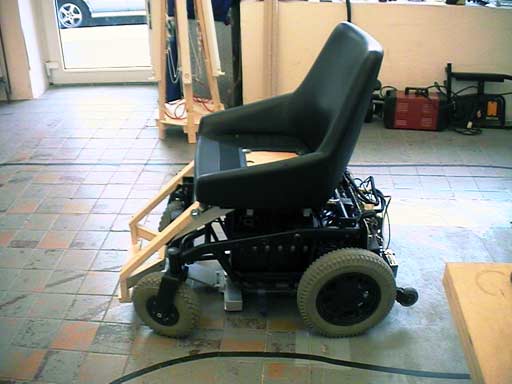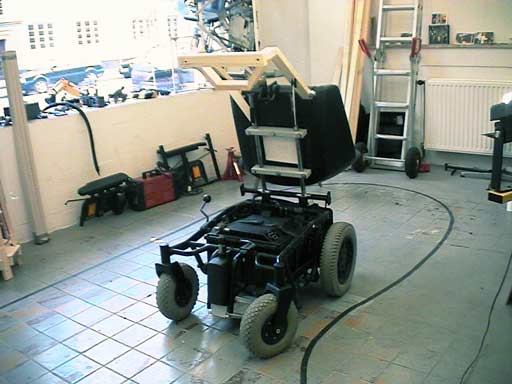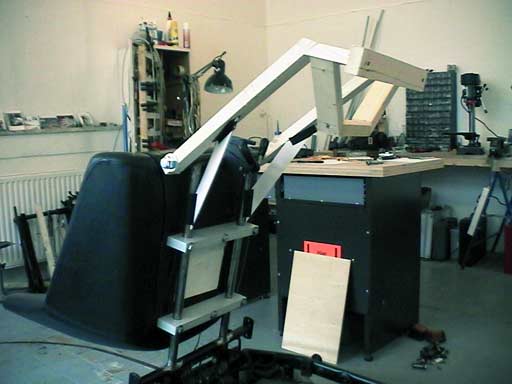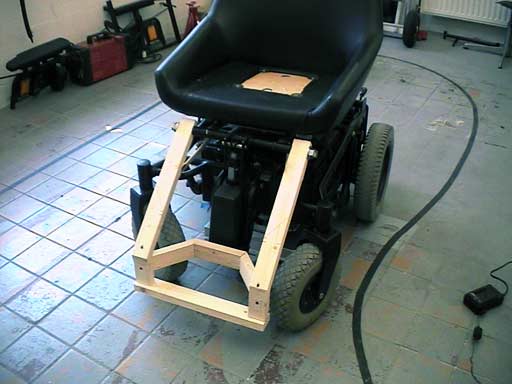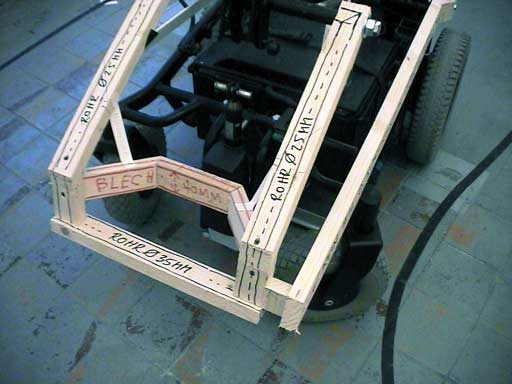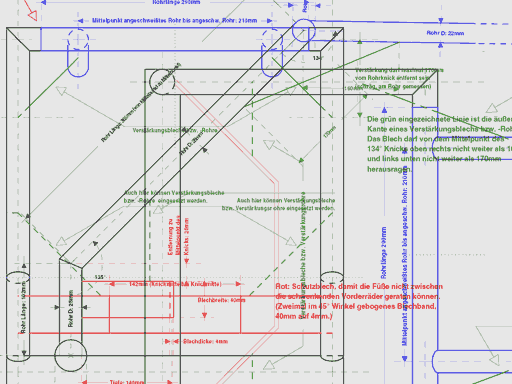|
|
||
| Back to the diary | The work of the last weeks was a bit annoying. I was programming the whole time to get the display running, and after that really long time, the only result that I had, was a few lines of code. I decided, that the next work should be something, where I really see a big physical result at the end. This is the reason, why I started to care about the wheelchair's chassis. First, I disassembled almost the whole wheelchair and removed all parts, that I didn't require. My wheelchair had the nice feature, that it could lift the seat for about 50cm. But the disadvantage of that mechanical device was, that it took quite a lot of space under the seat. So, even when chair was in the lowest position, it felt a bit like sitting on a tower. But I was seeking for a much more "normal" sitting position, so I removed this device. Another feature was, that the backrest could be adjusted by a motor, which was also placed under the seat. I also removed those mechanics to get the chair as low as possible. The image below shows the new seat in its final position. |
|
|
||
Because I removed so many parts, at the end there was no possibility anymore, to fix the seat at the wheelchair's chassis. I had to weld two tubes to the rest of the chassis and to screw the chair onto those tubes. The next pictures show the opened wheelchair. This is the position, where you have access to the batteries and here you can see the new steel tubes, which support the chair. |
||
|
||
|
||
|
||
Another problem was, that there's no support for the visitor's feet. There has to be some something, where they can leave them. The front wheels can turn in the y-axis, and if they do, they do it very powerful. If the visitors would keep their feet in the air, this would be quite dangerous. They could get easily between the spinning wheels and the frame construction, and I guess, that the wheelchair would be powerful enough to break them. I bought my wheelchair without any support for the feet, and even if I would own the original construction, I would not like to use it for several reasons: - First, I don't like the shape of those original supports. - Second, they are not very strong. You can't stand on them, when sitting down in the chair. They would break immediately. The normal process of sitting down in a wheelchair is quite complicated, because of the instability of those stands. Normally, each foot has its own platform, where you place it on. They can both be folded upwards. So before sitting down, you fold them up, then you lift your feet. With the feet in the air, you (or someone else) flap them down. And then you can place your feet onto the platforms. This might be ok for disabled people, which enter the wheelchair at morning and leave it in the evening. But it is far too complicated for an exhibition, where people, which are not used to it, have to sit down in a wheelchair. And this will happen - let's say -every two minutes. This is the reason, why I needed a different construction. I've built a model out of wood, to find out, how it should look like, and which position is comfortable. And because it has to be strong enough to hold the full weight of any visitor, when he sits down in the chair or when he gets out of it, I let it build out of steel by a building fitter. |
||
|
||
Today, I went to the building fitter and brought him the wood construction, that I have attached to the steel frame. When I finished the construction, I have written on each wood, what it should be at the end (tube or plate, and the diameter of it). |
||
|
||
I've also drawn some plans for him, which you can download here (in a version, which is not as chaotic as the image below). |
||
|
||
Now, I am very curious, how the construction looks like, when it is finished. And if I don't forget it, I will also take my camera to the building fitter and shoot some photos next time. I think, the guy is somewhat between 70 and 80 years old and he still works every day. Well, welding is a work where you need nothing more, than experience. And when I saw him for the first time, I thought, that he's at least old enough to be experienced. |
||
Please note, that the content on this webpage is licensed under a Creative Commons Attribution 2.0 License. Please respect the copyright of other webpages' content, which are linked from this webpage. |
||

